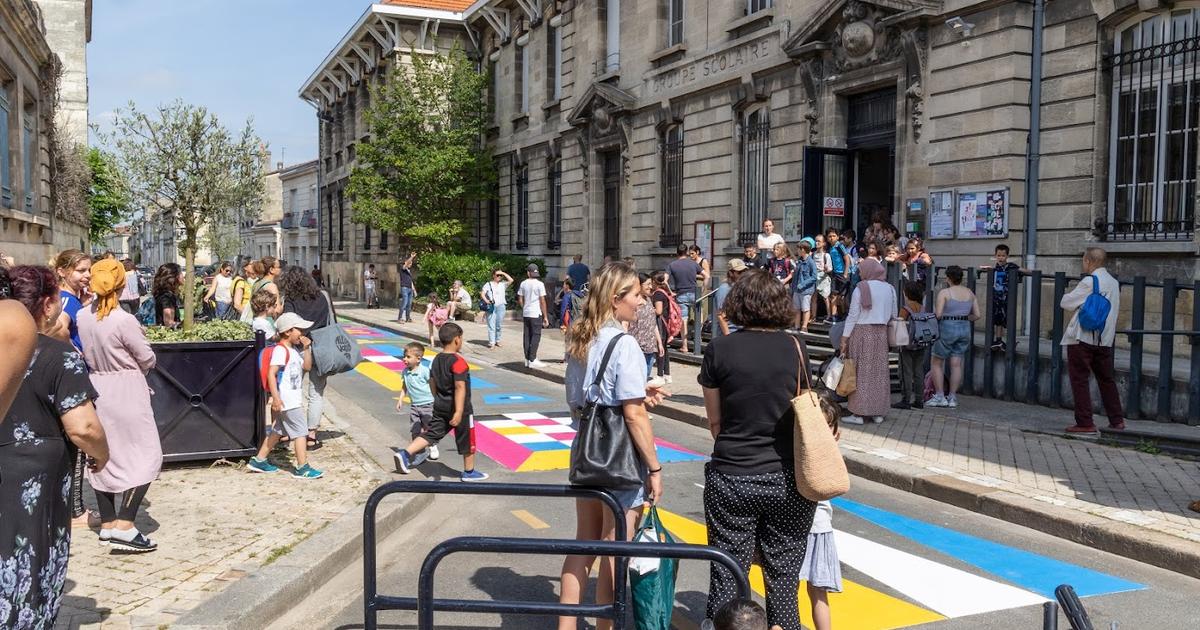In large cities, the heat island effect occurs: asphalt and concrete absorb heat during the day and emit it at night, making the temperature much higher than in nearby places where earth and trees predominate.
A study published this Wednesday in
The Lancet
with data from 93 European cities (where 57 million inhabitants over the age of 20 live) estimates that around 6,700 premature deaths are due to this phenomenon and points out that a third of these deaths could be prevented by planting trees in 30% of the urban space.
The data, from a typical summer in 2015, show that urban environments were on average 1.5°C warmer than nearby areas.
“We have conducted an assessment of the health impact of the heat island in these cities, and compared it to a hypothetical scenario in which we increase tree cover by 30% throughout the city.
From there we have made a model to explain the mortality that could be prevented”, explains Tamara Iungman, a researcher at ISGlobal —an institution promoted by the La Caixa Foundation that has led the work— and first author of the study.
The document analyzes the urban space with high-resolution images (in areas of 250 meters by 250 meters) to also take into account the distribution of vegetation.
“It is important to differentiate the mortality attributable to heat waves, which can affect many more places, with that related to heat islands, which are linked to urban design: asphalt,
The modeling yields a result of some 6,700 premature deaths due to the increase in temperatures in urban environments, which represents 4.3% of the total mortality during the summer months (from June to August) and 1.8% of mortality throughout the year.
The authors consider that a third of them (some 2,644) could have been avoided by increasing the tree cover to 30% of the urban space, which would reduce temperatures: on average, almost half a degree, but in some places 1.5° C and even more.
The wooded area of the analyzed cities is at 14.9%.
In general, the cities with the highest rates of excess mortality from heat are found in southern and eastern Europe, with these cities being the ones that would benefit most from an increase in tree cover.
According to Iungman, Barcelona only has 8% trees and premature mortality attributed to the heat island effect is 14%, while Madrid, which has 9.5% of the wooded area, has a morbidity rate of around 12 % because of this.
Puerta del Sol is being reformed without a single tree.
Europa Press News (Europa Press via Getty Images)
Irene Rodríguez Lorite, an architect and urban planner who has studied the heat island —although she has not participated in the study—, points out that "cities are increasingly opting for asphalt, which is waterproof, so it does not filter water and makes that the heat is also emitted at night, an effect that also increases pollution”.
In fact, according to reports from the C40 network of cities against climate change, around 40% of the surface of cities is covered by conventional pavements, such as asphalt, which "reach maximum temperatures in summer of up to 65 degrees Celsius and they heat the air above them.”
They are one of the main causes of the heat island effect.
Change paving stones for asphalt
Rodríguez points out as a negative example that the Madrid City Council is eliminating cobblestones, a material that allows water to leak, and replacing it with asphalt in many downtown streets.
In his opinion, "putting asphalt is the easy thing, the simple solution, and it allows politicians to take their photo before the elections, but with the situation we have it is much more effective to put dirt in the spaces that allow it, and trees or bushes.
What else can be done?
Iungman responds: "We have to start thinking about creating smarter cities, with more nature, more trees, and also having green roofs and walls, which aim to adapt to climate change and combat it, but also to create green urban infrastructure, which also reduces air pollution, mitigates noise pollution, promotes physical activity and improves perceived and mental health”.
In places where it is not possible to plant more trees "you can try to do it in private, industrial, institutional or administrative spaces."
The idea of the modeling published in
The Lancet
is to offer urban planners and local councilors tools to understand the magnitude of the problem and the positive effect of changing the urban model for a greener one.
Instead, many cities continue to bet on hard squares made of cement, concrete and asphalt, with hardly any green spaces, as is happening in Madrid with the Puerta del Sol (without a single tree) or the nearby Plaza del Carmen, where felled most of the specimens, or also that of Sants in Barcelona.
“There are too many concrete squares, we have to start changing it for green surfaces, because the more impermeable the surfaces are, the more heat island effect is produced”, sums up Iungman.
You can follow CLIMATE AND ENVIRONMENT on
and
, or sign up here to receive
our weekly newsletter



/cloudfront-eu-central-1.images.arcpublishing.com/prisa/45WUZH6TEJHAFKZE7WQSPCWG4A.jpg)





